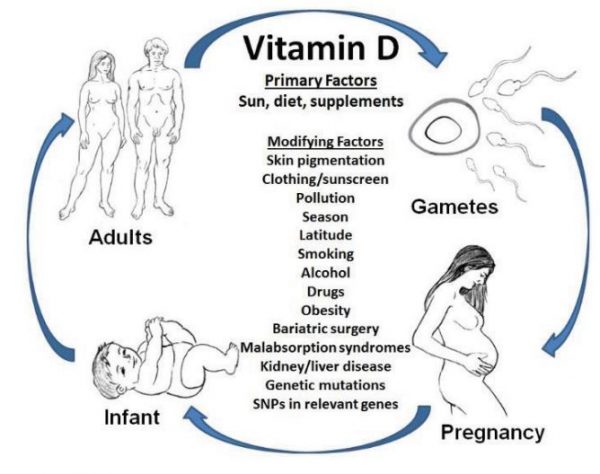Vitamin D and pregnancy: information every woman should know
Vitamin D insufficiency is a preventable condition that is important for mothers and their babies
1. Why is it important to maintain healthy vitamin D levels when pregnant?
- Vitamin D is a hormone1, as well as a vitamin, that is produced in the body through skin exposure to sunlight
- Vitamin D is an essential ingredient for maintaining a healthy body because it helps:
- maintain muscle and bone strength
- allows your body to absorb calcium
- may also help protect against developing certain types of diseases
- In pregnancy, vitamin D is a critical nutrient for the growth and development of the baby’s bones
2. Why is vitamin D important for mums and infants?
- Vitamin D is important in pregnancy because it has implications for both maternal and child health
- If you have a vitamin D deficiency (or low levels of vitamin D) it can affect the amount of calcium your baby has in his or her bones
- Optimal vitamin D and calcium nutrition is important in the maintenance of bone and muscle health in mothers and infants
3. What is low vitamin D and vitamin D deficiency?
- Low vitamin D and vitamin D deficiency is a common and preventable health problem. It refers to when a person has insufficient vitamin D to help their bodies absorb calcium and perform other important functions
- A lack of vitamin D attacks in two ways; it weakens the bones but it also weakens the muscles that must support them. This leads to low vitamin D increasing the risk of falls and subsequent injury particularly in older adults
- Low vitamin D may have no obvious symptoms but without treatment it can increase a person’s risk of osteoporosis
4. Who is at risk of having low vitamin D levels?
- Women who are at high risk of having low vitamin D include:
- o Recent refugees
- o Women with naturally dark skin
- o Women who cover all of their skin for religious or cultural reasons
- o Women who always stay indoors or shift workers
- Pregnant women can be at-risk of vitamin D deficiency because of increased body function needs and reduced outdoor activity
- As very little vitamin D is obtained from diet, breast fed babes of deficient mothers are likely to be deficient
5. How common is low vitamin D?
- Vitamin D insufficiency is common in the general population2, including pregnant women
- It is estimated that as many as one in three* adults may suffer from low vitamin D levels
- A recent Australian study of more than 300 pregnant women found 80 per cent had insufficient vitamin D levels and 28 per cent had mild vitamin D deficiency and 7 per cent had moderate to severe deficiency
- The same study also found that 50 per cent of women had insufficient or deficient vitamin D levels during summer
- People living in the southern regions of Australia have a higher risk of vitamin D deficiency, particularly during winter months
6. How can I get my vitamin D levels checked?
- If you might be at risk of having low vitamin D levels it is important to have your levels checked before pregnancy or in early pregnancy
- Vitamin D levels can be checked with a simple blood test, and a doctor can advise if a vitamin D supplement is necessary
- It’s important everyone gets enough vitamin D; you should speak with your doctor to get your levels tested and consider supplements to meet your daily intake requirements
7. Where can I get vitamin D from?
- Vitamin D is mostly made in the skin by the action of sunlight, but a small amount comes from diet, such as oily fish, egg yolks, margarine and some brands of milk
- The vitamin D dietary intake among Australians is low, with most Australians only obtaining 10–25% of their daily vitamin D requirements from diet
- To maximise vitamin D health benefits and maintain healthy levels, particularly during winter time, supplements are an ideal source of vitamin D
- Look for vitamin D supplements that contain cholecalciferol (vitamin D3); this is the form of vitamin D which is produced naturally in the body
8. How much sun exposure is required to produce vitamin D?
- From May to August, to maintain adequate vitamin D, people living in Southern regions of Australia need two to three hours of sunlight to the face, arms and hands (or an equivalent area of the skin), spread over a week10
- People with naturally very dark skin may need significantly more exposure to meet their vitamin D requirements10





